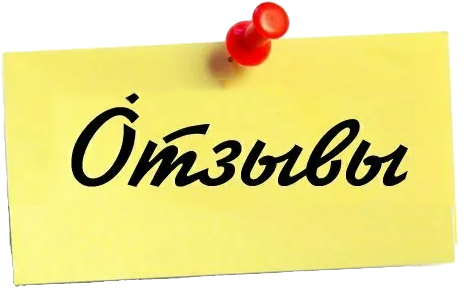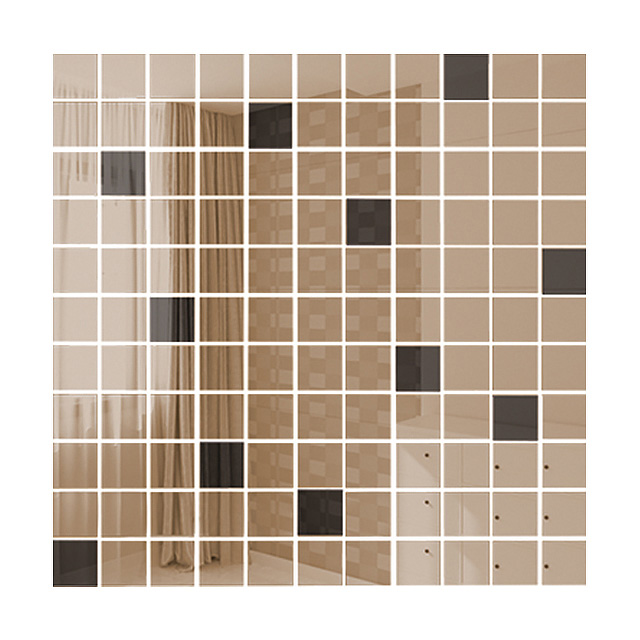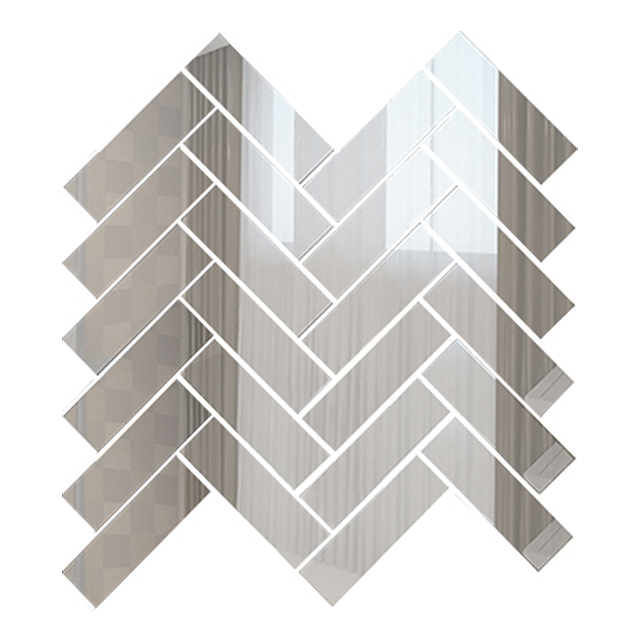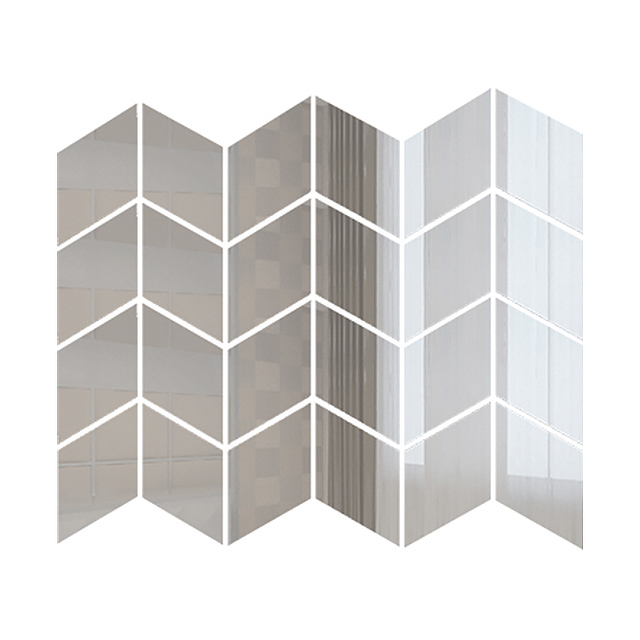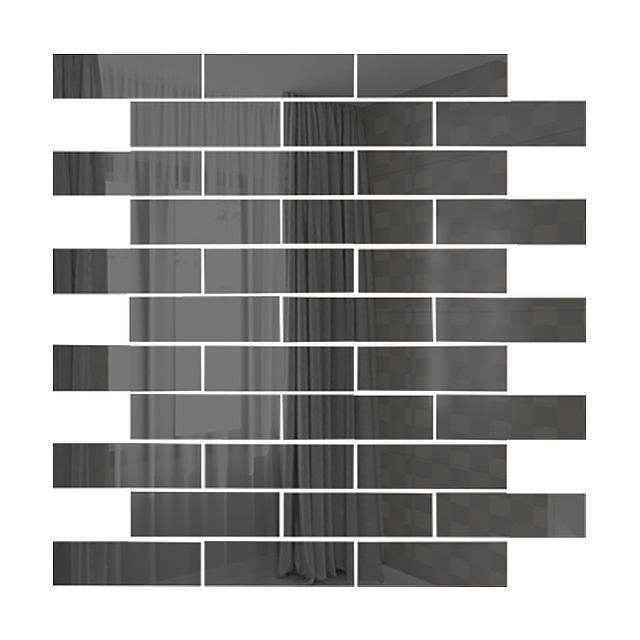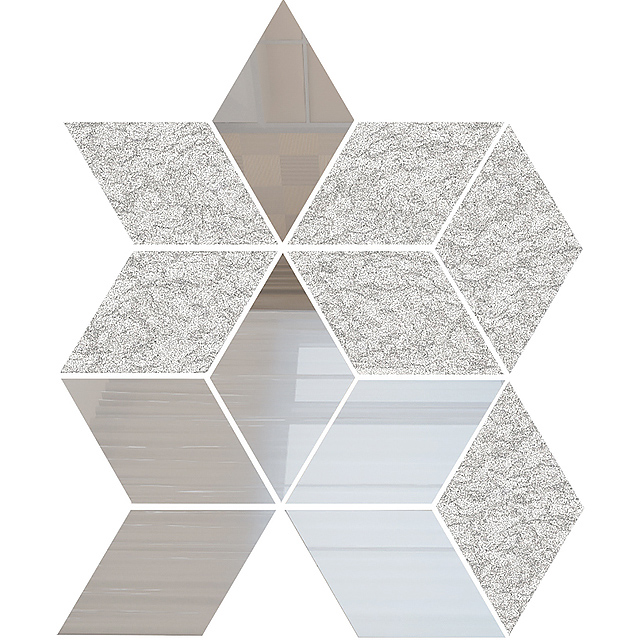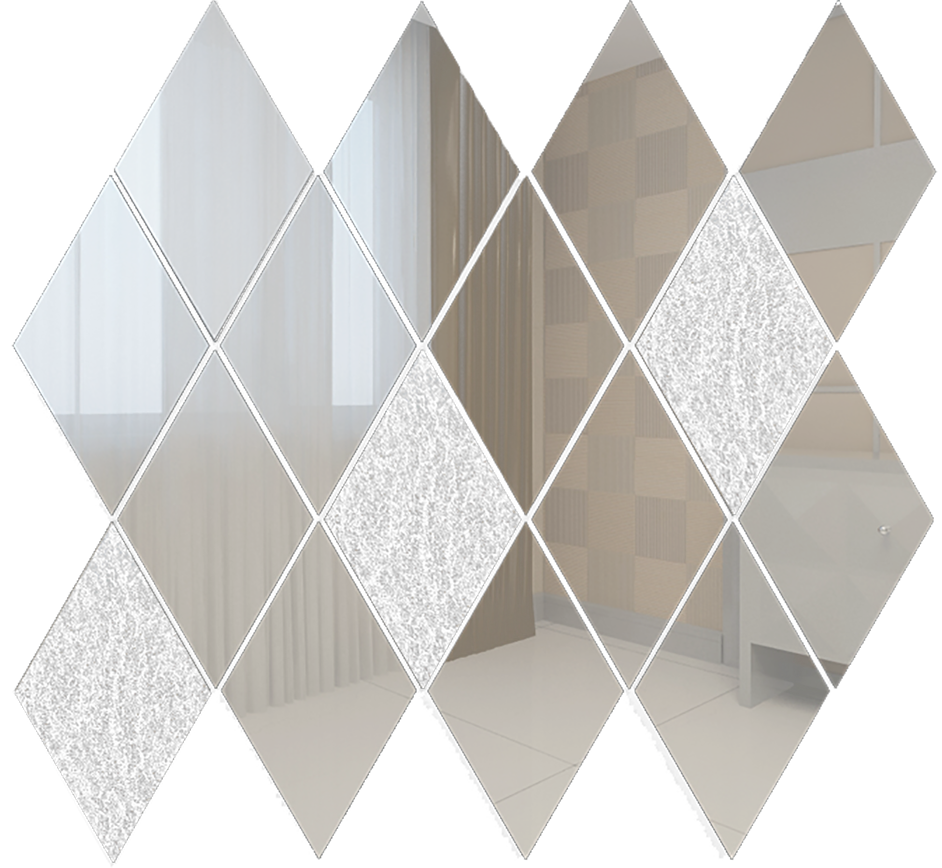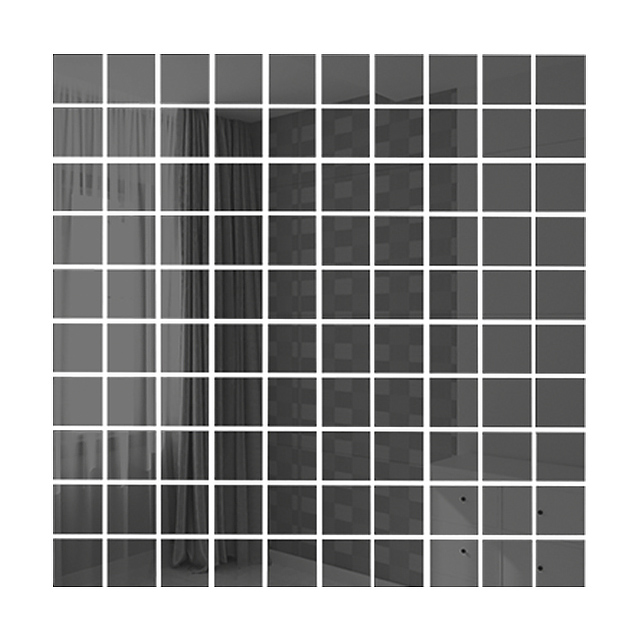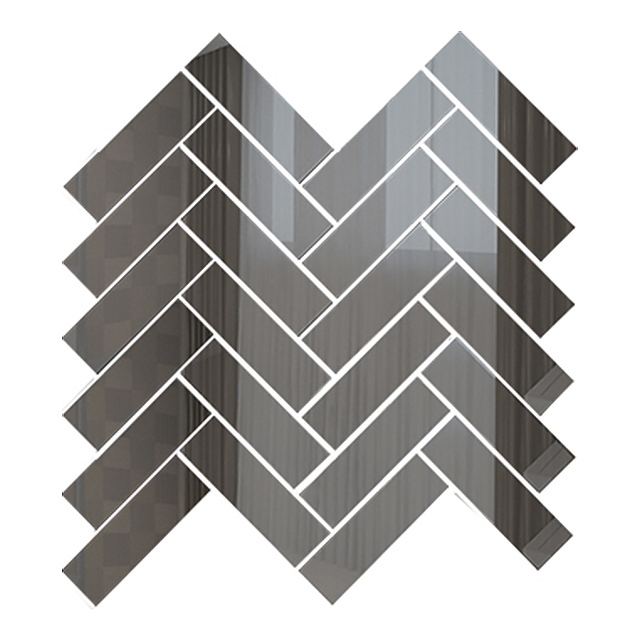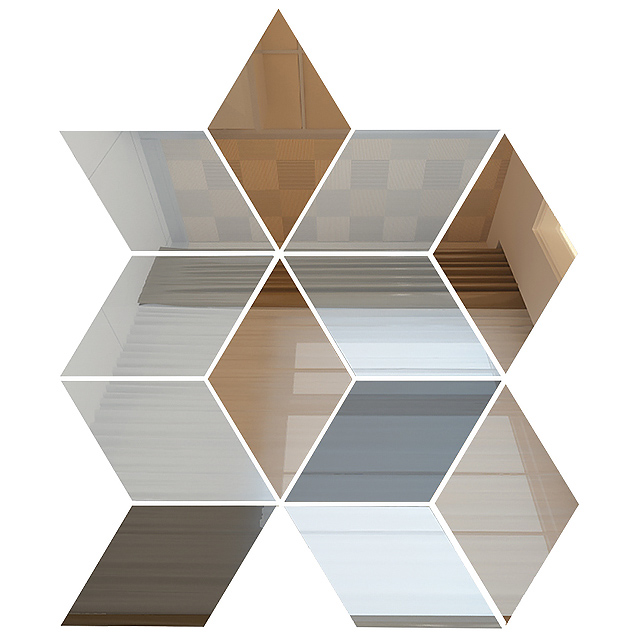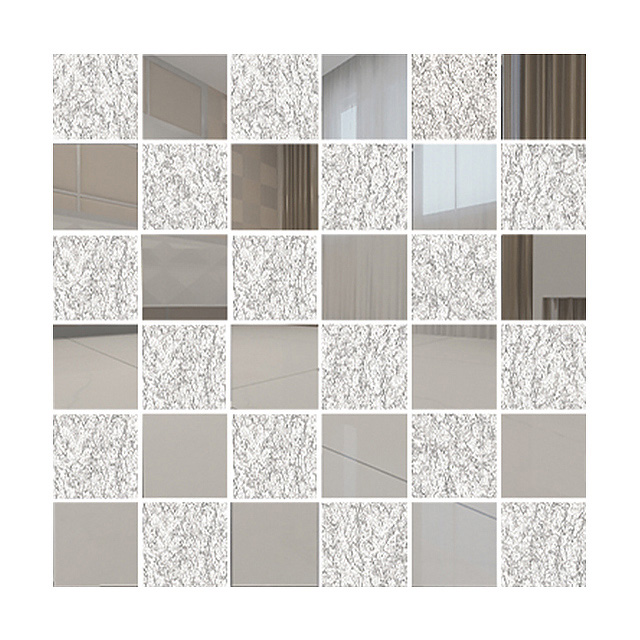
Mirror tiles can be mounted on the following surfaces:
• ceramic tiles
• plaster
• brick
• concrete
• tree
• CHIPBOARD
• MDF
• plywood
• polyester
• polystyrene
• steel
• aluminum
• glass
• drywall
• painted surface
It is not recommended to use the following surfaces for laying mirror tiles:
• wallpaper
• epoxy coatings
• coatings aggressive to the mirror amalgam (having an alkaline reaction)
The first step is to prepare the surface on which the installation will be carried out:
1. We clean it from dust, plaster, paint, chalk, lime.
2. The base must be dry, clean and as aligned as possible.
3. Check the surface using the level.
If you have a ready repair and wallpaper glued, then you have nothing to worry about. Pick up the necessary glue and proceed with installation.
The second step is to prepare the necessary tools:
• glue
• glue gun
• clean rags or rags
• level
• roulette
• pencil
• glass cutter (preferably)
• plastic card
• masking and double-sided adhesive tape
The third step is installation:
1. Unpack the tile and recalculate whether there are enough tiles for laying out the panels.
2. Lay out the mirror tiles on a flat horizontal surface. We recommend doing this taking into account the gaps of 0.5 - 1 mm. You can use any plastic card to hold the gaps.
3. Mark the surface on the wall. Even experienced craftsmen do not neglect markup, and if you are doing this for the first time, then markup is simply mandatory for you.
4. If you lay out a mirror tile on the entire wall or a column from floor to ceiling, then start from the far corner and move up from the bottom. If the decor will decorate only part of the wall, then you can start from the middle of the bottom row of panels to get symmetrical. But the installation always goes in the direction from the floor to the ceiling.
5. Use a gun to apply specialized glue for mirrors on the tile or on the wall. We do not recommend using cement-based glue, universal sealants and other non-specialized materials. The tile sheet is carefully applied and pressed against the wall without excessive pressure, observing the markings. The rest of the tiles are glued in the same way.
6. Take breaks between the installation of adjacent rows in 10-15 minutes. So the glue will harden, and you can check if the tile has slipped. Also, in order to avoid sliding tiles, it is additionally recommended to use double-sided tape. Masking tape will help you to fasten the tiles together to maintain their position during the hardening of the glue.
7. If you install mirror tiles in damp rooms, you should carefully seal the seams.
8. Installation is carried out at a temperature of +10 to +40 degrees.
The fourth step is shutdown:
1. When the laying process is finished, the tiled surface of the tile is left to dry completely.
2. Neutral sealants of any color or epoxy-based grout can be used for grouting joints. If you use grout to decorate joints in a damp room, then choose a sealant with antifungal and bactericidal properties. During the grout process, it is possible to protect the tile from contamination with masking tape.
3. After the glue has completely dried out, and at least 6 hours have passed after applying the grout, it is necessary to polish the tile with a soft cloth with an antistatic agent.






 Mirror Tile
Mirror Tile Mirror Mosaic
Mirror Mosaic Glass mosaic
Glass mosaic TILE CALCULATOR
TILE CALCULATOR